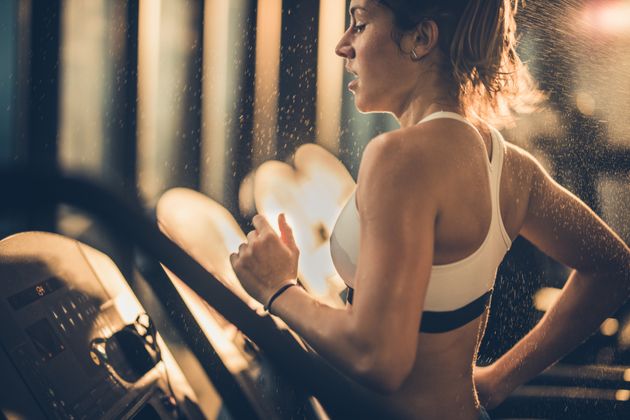
In 2009, in a now infamous article for WWD, iconic supermodel Kate Moss uttered a motto that would inspire a generation of pro-anorexia literature.
“Nothing tastes as good as skinny feels,” Moss told her interviewer, in a piece aptly subtitled ‘The Waif That Roared’.
In that instant Moss captured the mood of the so-called “heroin chic” trend of the mid ’90s to early ’00s that had made her famous. Characterised by pale skin, emaciated features, and an angular bone structure, it was a look that screamed of a world where the health of women was secondary to fashion.
In spite of the imprudent nature of Moss’ words, the roar that WWD promised quickly materialised. For years the slogan infiltrated pro-anorexia forums, and even today a quick Google offers up pages of images of the words in Instagram-ready fonts against tasteful backgrounds of millennial pink.
Today, the most popular beauty slogans are, at first glance, much less harmful. The body positive movement that has sprung from social media in recent years frowns on the idea of limiting food intake, and calorie counting has become an unfollow-worthy sin. Our favourite fitspo models tend to beam out at us over perfectly filtered and loaded plates of food after a gym session.
“The only thing I like better than talking about food is eating food,” minute Made in Chelsea alumni Louise Thompson recently captioned a picture of herself, one of many she uploads sat before laden dishes.
Having caused controversy last year with her fitness focused book originally entitled Body Positive, which cynical tweeters claimed appropriated a term generally applied to marginalised figures, Thompson joins the ranks of sculpted women who make up the so-called #strongnotskinny movement. In complete contrast to mantras promoting hunger, it’s become hard to move for hashtags that enshrine fuelling our bodies, leg day, and toning up.
It would be wrong to berate these women for their achievements. Clearly they’ve spent an admirable amount of hours in the gym, and most have educated themselves about nutrition. It would also be wrong to suggest that this is unhealthy in the same way that anorexia is – surely we can all let out a collective sigh of relief that we’re no longer expected to eschew carbs and can legitimately strive for mermaid thighs in the same way society once told us to aim for a thigh gap?
However, the bodies behind these sentiments are perhaps as problematic as the slender figures of old. In place of protruding ribs and hollowed out cheeks, sculpted abs and belfie-worthy bums have become the aspirational norm for women everywhere. Is the insistence that women should look a certain way really so different from the size zero narrative that Kate played into almost a decade ago?
Within the last year, ortherexia nervosa, an unhealthy obsession with righteous eating, gained traction in the media in backlash to the clean eating movement. Compulsively exercising is another condition that, although not yet formally recognised in the Diagnostic and Statistical Manual, has increasingly come to medical focus in the wake of the #strongnotskinny movement. Have we simply replaced one triggering body type with another?
Away from the extreme ramifications of idealising any figure, it’s clear that the toned bodies of fitness influencers are far from achievable for most women. When most of us can barely squeeze a Zumba class into a jam-packed working week we are consistently confronted with bodies sculpted by hours on the weights machines every time we scroll through our news feed. As motivational as the model’s captions may be, they reflect a lifestyle that is miles apart from what is feasible for most of their followers.
The dichotomy that #strongnotskinny creates leaves little space for the women that fit into neither of these binary body types. Whilst larger ladies might celebrate a shunning of the petite figure as the only acceptable body type, they similarly find themselves far from the apparent alternative. Thick thighs and wide hips are suddenly coveted – but only when earned in the gym. Equally, naturally or healthily thinner women find themselves demonised by a movement that exalts muscle-crafted curves at the explicit expense of their opposing shape.
The idea of body positivity is nuanced and complex, and leaves space for people of all shapes and sizes. In utter contrast, #strongnotskinny deliberately idealises one body type at the expense of specifically one, and implicitly many, others. To equate the two is harmful, both to the movements themselves and to those who buy into them.
Idolizing #strongnotskinny as a healthy alternative to generations of advice women have endured on the way they should look is plain misleading. We may demonise Moss’ words today, but are they really so different from some of the top trending fitness hashtags on social media: #nopainnogain, #welifttoeat, and #bodygoals? If Instagram had been big in 2009 #nothingtastesasgoodasskinnyfeels would have almost certainly trended.
It’s time to give our bodies a break and to stop listening to the noise of caption worthy slogans that instruct them to fit into a certain type, especially at the expense of others. In 2018 let’s ditch the negativity, hit unfollow, and embrace how we want our bodies to look and feel—be that strong, skinny, or everything around and in-between.


